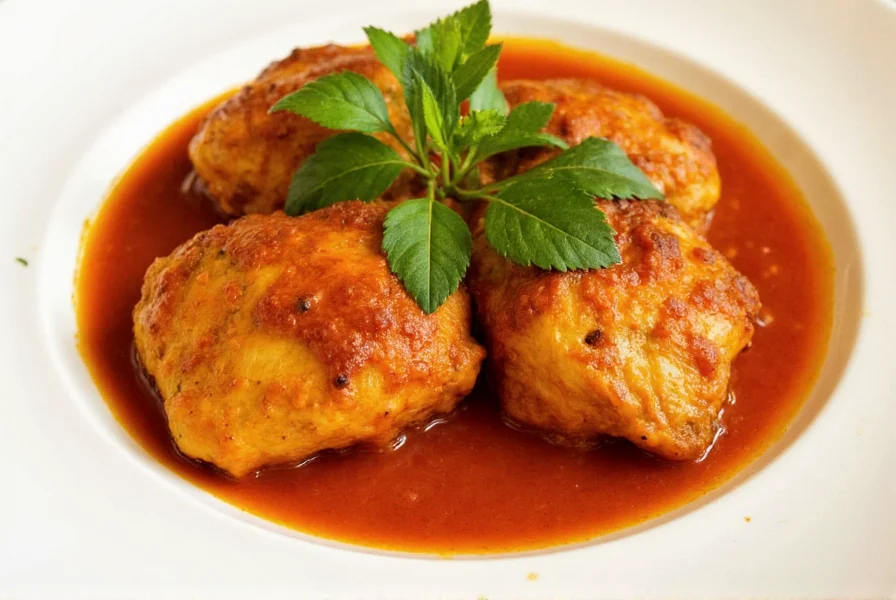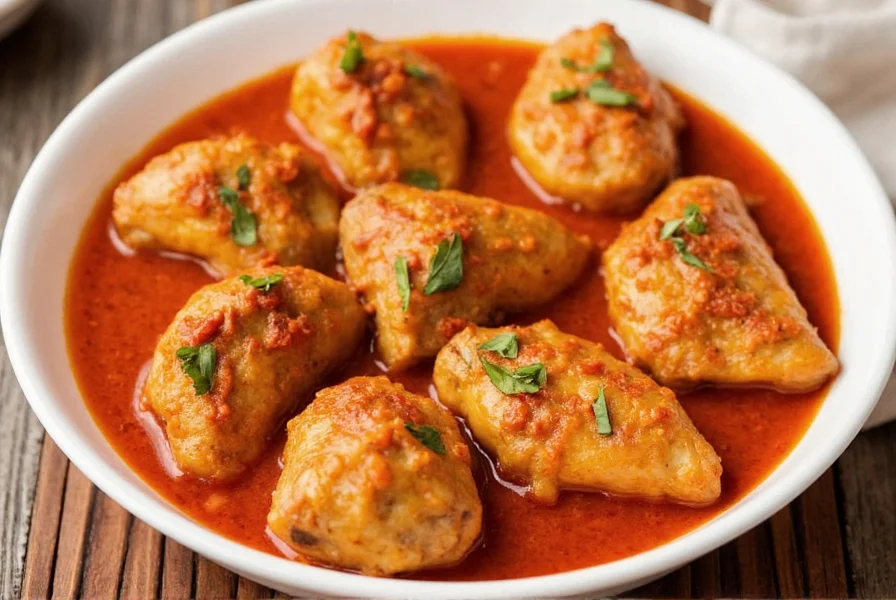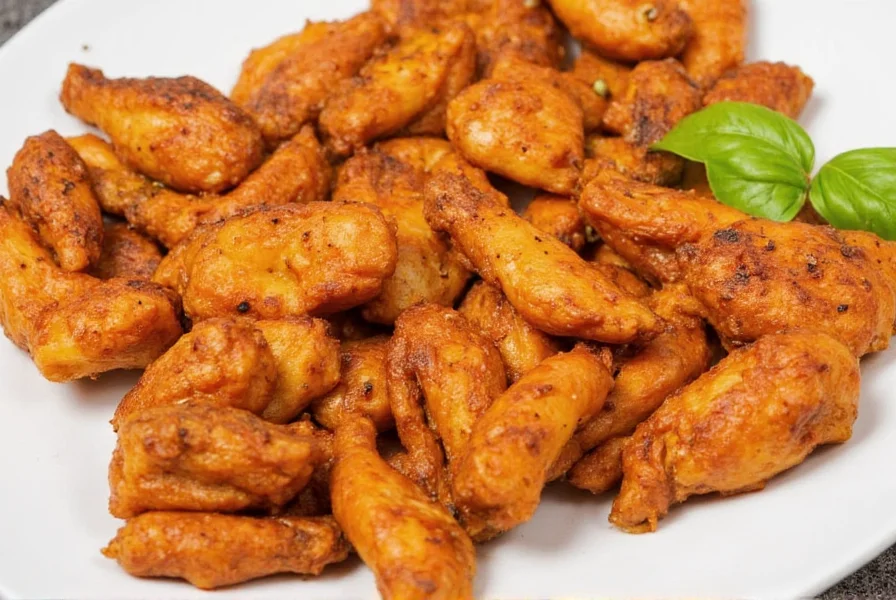If you're searching for a reliable paprika chicken recipe, you've found the definitive guide. This classic dish, with roots in Hungarian cuisine, delivers rich flavor with surprisingly simple preparation. The magic happens when quality paprika meets properly cooked chicken, creating a comforting meal that works equally well for weeknight dinners or special occasions.
The Essential Ingredients for Authentic Paprika Chicken
What separates an ordinary paprika chicken from an extraordinary one comes down to ingredient selection and technique. Let's break down what you'll need for the best results:
| Ingredient | Why It Matters | Recommended Quantity |
|---|---|---|
| Chicken thighs (bone-in, skin-on) | Provides superior flavor and stays moist during cooking | 6 pieces (about 2 lbs) |
| Hungarian sweet paprika | Essential for authentic flavor (not smoked paprika) | 3 tablespoons |
| Yellow onion | Creates the flavor base when caramelized properly | 1 large, finely chopped |
| Garlic | Adds depth without overpowering | 3 cloves, minced |
| Sour cream | Creates the signature creamy finish | 1/2 cup |
Many home cooks make the mistake of using the wrong type of paprika. For authentic Hungarian paprika chicken recipe results, seek out Hungarian sweet paprika rather than smoked paprika, which creates a completely different flavor profile. The quality of your paprika dramatically affects the final dish—fresh, high-quality paprika makes all the difference.
Step-by-Step Preparation Guide
Follow these professional kitchen techniques for foolproof paprika chicken every time:
- Prep your ingredients: Pat chicken pieces completely dry with paper towels. Chop onions finely and mince garlic. Measure all spices before beginning.
- Brown the chicken: Heat 2 tablespoons oil in a heavy skillet or Dutch oven over medium-high heat. Season chicken with salt and pepper, then brown skin-side down for 5-6 minutes until golden. Flip and brown other side for 3-4 minutes. Remove chicken and set aside.
- Build the flavor base: In the same pot, reduce heat to medium and add onions. Cook for 8-10 minutes until deeply caramelized (not just softened). This step is crucial for developing complex flavors in your easy paprika chicken recipe.
- Add paprika carefully: Reduce heat to low, add paprika and garlic, and stir constantly for 30 seconds. Never add paprika to high heat as it will burn and become bitter.
- Simmer to perfection: Return chicken to pot, add 1/2 cup chicken broth, cover, and simmer on low for 30-40 minutes until chicken is fork-tender. Avoid boiling, which can make chicken tough.
- Finish with sour cream: Remove from heat, stir in sour cream, and adjust seasoning. Let sit 5 minutes before serving to allow flavors to meld.

Avoiding Common Paprika Chicken Mistakes
Even experienced cooks can stumble with this seemingly simple dish. Here's what to watch for when making your paprika chicken with potatoes or other sides:
- Burning the paprika: Paprika burns at relatively low temperatures. Always add it to reduced heat and stir constantly for just 20-30 seconds.
- Using the wrong chicken cut: While you can make paprika chicken with breast, thighs provide superior results due to their fat content and ability to stay moist during cooking.
- Rushing the onion caramelization: Properly caramelized onions (not just softened) create the flavor foundation. This takes 8-10 minutes over medium heat.
- Boiling instead of simmering: High heat during cooking makes chicken tough. Maintain a gentle simmer for tender results.
- Adding sour cream to boiling liquid: This causes curdling. Remove from heat before adding sour cream and don't return to high heat.
Serving Suggestions and Variations
Traditional Hungarian paprika chicken pairs perfectly with simple starches that absorb the flavorful sauce:
- Boiled potatoes: The classic accompaniment for paprika chicken with potatoes
- Nokedli (Hungarian dumplings): Also called "spaetzle," these small dumplings soak up sauce beautifully
- Rice or egg noodles: Excellent alternatives that work well with the rich sauce
- Steamed vegetables: Green beans or roasted carrots provide a fresh contrast
For those seeking a spicy paprika chicken recipe variation, add 1/2 teaspoon cayenne pepper or a diced jalapeño when cooking the onions. Prefer an oven-baked version? After browning, transfer everything to a 325°F oven for 45 minutes instead of stovetop simmering.
Storage and Reheating Tips
Paprika chicken actually improves in flavor the next day as the spices continue to meld. Store leftovers in an airtight container in the refrigerator for up to 3 days:
- Reheating on stove: Gently warm over low heat, adding a splash of broth if needed. Never boil.
- Reheating in microwave: Cover and heat at 50% power in 2-minute intervals, stirring between.
- Freezing: Freeze without sour cream for up to 3 months. Add fresh sour cream when reheating.
For meal prep enthusiasts, this simple paprika chicken dinner makes excellent freezer portions. Just remember to add the sour cream after reheating for best texture and flavor.

Why This Recipe Works
The science behind a perfect paprika chicken recipe lies in understanding how the ingredients interact. Paprika contains delicate flavor compounds that degrade at high temperatures, explaining why adding it to hot oil requires careful temperature control. The fat in chicken thighs helps carry and distribute the fat-soluble compounds in paprika throughout the dish. The sour cream finish not only adds richness but also helps balance the natural acidity that develops during cooking.
Unlike many simplified paprika chicken recipes online, this method respects the traditional techniques that make the dish exceptional. You'll notice the difference in both aroma and flavor when following these precise steps for your homemade paprika chicken.
Frequently Asked Questions
What's the difference between sweet paprika and smoked paprika for this recipe?
Sweet Hungarian paprika provides the authentic flavor for traditional paprika chicken, while smoked paprika creates a completely different taste profile. For an authentic Hungarian paprika chicken recipe, use sweet paprika - smoked will overpower the dish's traditional flavor.
Can I use chicken breast instead of thighs in this paprika chicken recipe?
Yes, but with caution. Chicken breast cooks faster and can become dry. If using breast, reduce cooking time to 20-25 minutes and check temperature early. Thighs are recommended for the best texture in a simple paprika chicken dinner as their higher fat content keeps them moist during the longer cooking process.
Why does my paprika chicken taste bitter sometimes?
Bitterness usually comes from burning the paprika. Always add paprika to reduced heat (medium-low) and stir constantly for just 20-30 seconds before adding liquid. Never add paprika directly to very hot oil as it burns easily, creating unpleasant bitter compounds.
How can I make my paprika chicken sauce thicker?
For a thicker sauce, simmer uncovered for the last 10 minutes of cooking to reduce liquid. Alternatively, mix 1 tablespoon flour with 2 tablespoons cold water and stir in during the last 5 minutes of cooking. Avoid adding too much thickener as traditional paprika chicken has a silky, pourable consistency.











 浙公网安备
33010002000092号
浙公网安备
33010002000092号 浙B2-20120091-4
浙B2-20120091-4